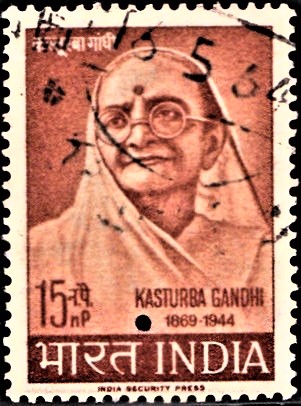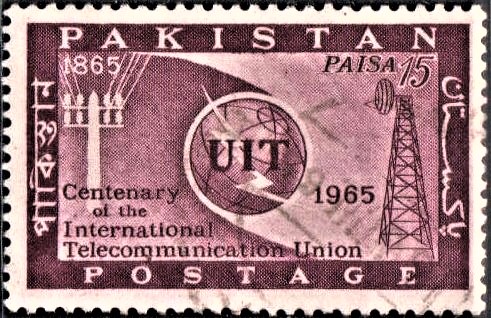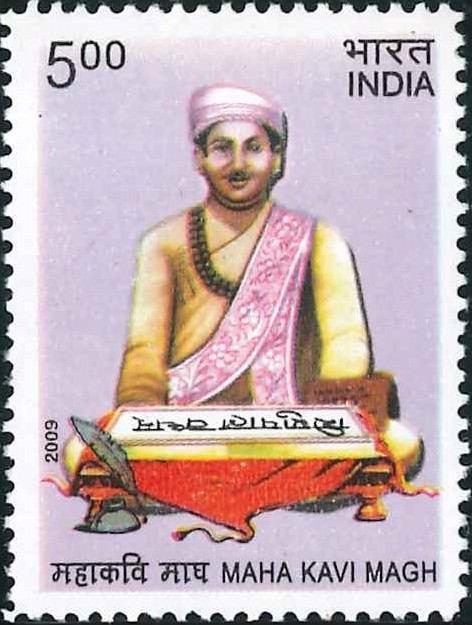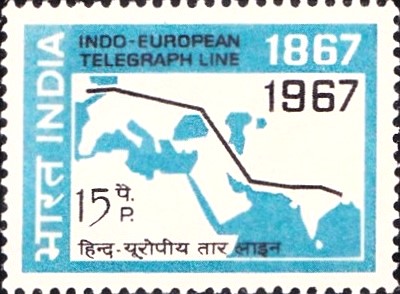
India on Indo-European Telegraph Line
A commemorative postage stamp on the Centenary of the Indo–European Telegraph Service :

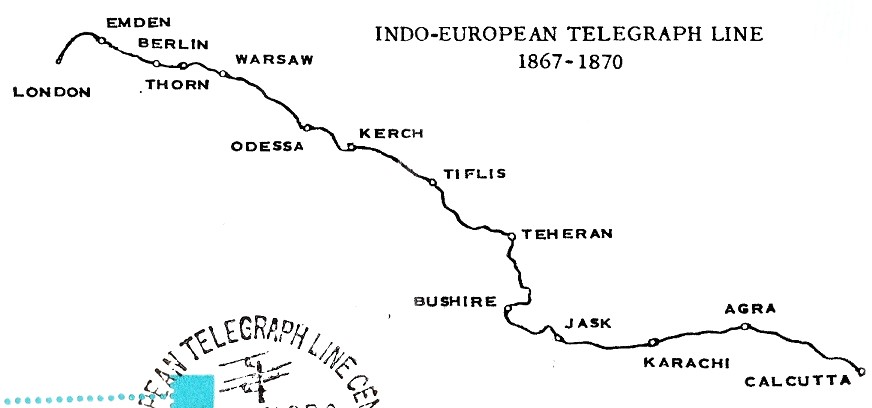
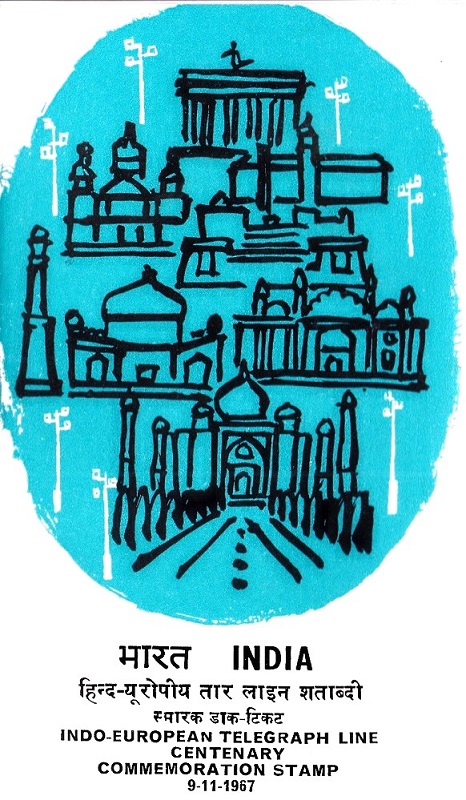 Issued by India
Issued by India
Issued on Nov 9, 1967
Issued for : To commemorate the centenary of the Indo-European Telegraph line which is being celebrated this year, the P & T Department is bringing out a special postage stamp on the 9th of November, 1967.
Type : Stamp, Mint Condition
Colour : Monastral Blue and Plum
Denomination : 15 Paisa
Overall Size : 3.34 X 2.46 cms.
Printing Size : 2.99 X 2.1 cms.
Perforation : 14 x 13½
Watermark : Printed on unwatermarked paper
Number Printed : 20,00,000
Number per issue Sheet : 54
Printing Process : Photogravure
Designed and Printed at : India Security Press
About :
- The year 1867 constitutes an important landmark in the history of international telegraph services between Europe and India. Prior to 1867, there was no direct telegraph communication between India and Europe. There were several independent telegraph lines in different countries : messages had to be repeated many times with the result that they often took weeks in transmission and reached their destination in an altogether unintelligible and mutilated state. The great need for a quick and reliable telegraphic communication between England and India could only be satisfied by a line through Prussia, Russia and Persia planned as a connected whole, and under an undivided management. The transcontinental line was conceived by Werner Von Siemens of Germany. He translated his vision into reality by raising funds and obtaining political imprimatur from Russia, Persia and the other link countries. He began erecting the line in 1867. In spite of great and unexpected obstacles, the line was completed by the end of 1869. Compared with today’s sophisticated telecommunication techniques, the line was a very simple affair. It was essentially an open wire system, but it took 68,706 poles of pine, oak and iron and three full years to complete it. It excited great astonishment when at the first official experiment, Calcutta and London conversed with each other along a line of nearly seven thousand miles as quickly and as surely as between two neighbouring telegraph stations. The lines survived floods, earthquakes, wars and other disasters; it provided good and efficient service right up to 1931, when it was taken over by the Postal Administrations in the countries through which it ran. Even today, part of the original line operates in Persia.
Subscribe
Login
0 Comments


